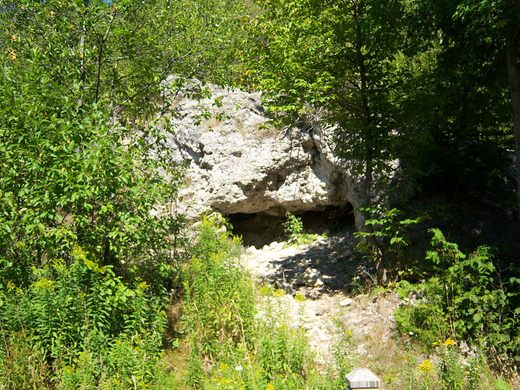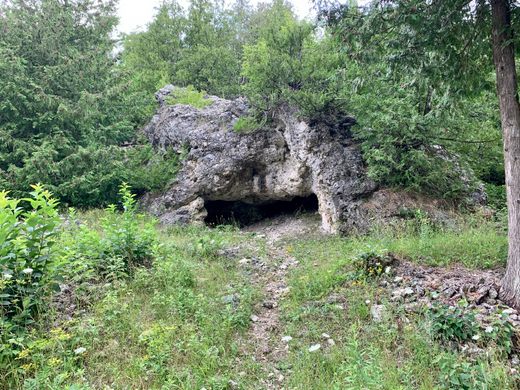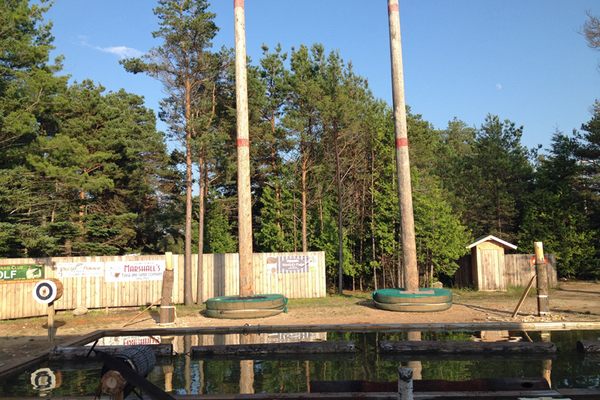Skull Cave
This shallow cave got its name from copious amount of human bones found inside.
Located on Michigan’s Mackinac Island, Skull Cave is not large or particularly showy, but at one point it was filled with human bones.
The squat natural cave that now goes by the ominous monicker, Skull Cave was originally carved out of the rock by the natural processes of the long-since disappeared Lake Algonquin. The little cavern did not begin to earn its current name until the 18th century when the local Native Americans began using the natural niche as a revered burial spot. Well, not quite burial, so much as just laying them to rest inside the cave.
Having been used as an inhumation site by countless generations of Native Americans, by the time it was “discovered” by a fur trader it was quite the grisly site. It was a fur trader by the name of Alexander Henry who stumbled upon the cave as he fled the violence of Pontiac’s Rebellion in 1763. Looking for somewhere to hide, he took refuge in the cave and later wrote that he had spent the night on “nothing less than a heap of human bones and skulls, which covered the floor!” Whoops!
Today the cave is free of bones, but is still a popular visitor destination on the island. It might not have the terrifying grandeur that its name implies, but Skull Cave’s history is grisly enough.
Know Before You Go
Skull Cave is contained within Mackinac Island State Park. It is located 0.4 miles (0.6 km) north of Fort Mackinac in the island's interior.

















Follow us on Twitter to get the latest on the world's hidden wonders.
Like us on Facebook to get the latest on the world's hidden wonders.
Follow us on Twitter Like us on Facebook